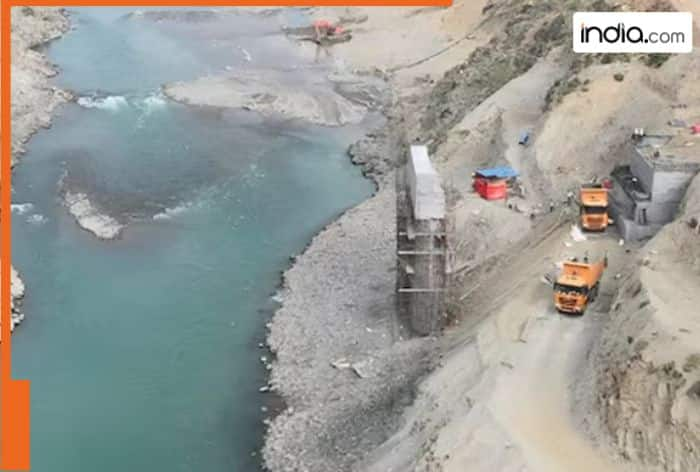Waters from the rivers constitute about 80 per cent of drinking and irrigation supplies to Pakistan.

After India suspended the Indus Waters Treaty (IWT) following the deadly terror attack in Pahalgam on April 22, China has now taken a new step to support its ally Pakistan by deciding to fast-track work on a major dam project in the country. According to the South China Morning Post, a Chinese government-owned company, China Energy Engineering Corporation, has been building the Mohmand Hydropower Project in Pakistan’s Khyber Pakhtunkhwa province, located in the northwest of the country, since 2019.
The project was originally set to be finished next year. But on Saturday, China’s state broadcaster CCTV announced that concrete filling work on the dam has now begun. This step marks “a critical construction milestone and a phase of accelerated development for this national flagship project of Pakistan”, reported South China Morning Post.
Initially, the project commenced in September 2019. However, it will be completed next year. China’s move followed India’s announcement to suspend the 1960 Indus Waters Treaty after the deadly militant attack on tourists at Pahalgam on April 22.
Despite reaching an agreement of cessation of hostilities, the Indian government maintains its stance on the Indus Water Treaty which is still in abeyance. The treaty was suspended following the April 22 Pahalgam terror attack. The Indus system comprises of main Indus River, Jhelum, Chenab, Ravi, Beas, and Sutlej. The basin is mainly shared by India and Pakistan with a small share for China and Afghanistan.
According to the news agency ANI report, under the Indus Waters Treaty signed between India and Pakistan in 1960, all the waters of three rivers, namely Ravi, Sutlej and Beas ( Eastern Rivers) averaging around 33 million acre feet ( MAF) were allocated to India for exclusive use. The waters of Western rivers – Indus, Jhelum, and Chenab averaging to around 135 MAF were allocated to Pakistan except for specified domestic, non-consumptive and agricultural use permitted to India as provided in the Treaty.
India has also been given the right to generate hydroelectricity through run of the river(RoR) projects on the Western Rivers which, subject to specific criteria for design and operation is unrestricted.To utilize the waters of the Eastern rivers which have been allocated to India for exclusive use, India has constructed Bhakra Dam on Satluj, Pong and Pandoh Dam on Beas and Thein (Ranjitsagar) on Ravi.These storage works, together with other works like Beas-Sutlej Link, Madhopur-Beas Link, Indira Gandhi Nahar Project etc has helped India utilize most of the waters of waters of Eastern rivers, ANI reported.
The move comes ahead of Deputy Prime Minister and Foreign Minister Ishaq Dar’s visit to Beijing on Monday for talks with top Chinese diplomat Wang Yi.
The Mohmand dam in Khyber Pakhtunkhwa province is designed to serve as a multi-purpose facility for power generation, flood control, irrigation and water supply and is designed to generate an estimated 800MW of hydropower and supply 300 million gallons a day of drinking water to Peshawar, the capital and largest city of Khyber Pakhtunkhwa. Waters from the rivers constitute about 80 per cent of drinking and irrigation supplies to Pakistan.
According to the South China Morning Post, the dam is expected to produce around 800 megawatts of hydropower and deliver 300 million gallons of drinking water each day to Peshawar, the capital and largest city of Khyber Pakhtunkhwa province. According to media reports, this dam, standing 700 feet tall, will rank as the fifth highest dam in the world.
